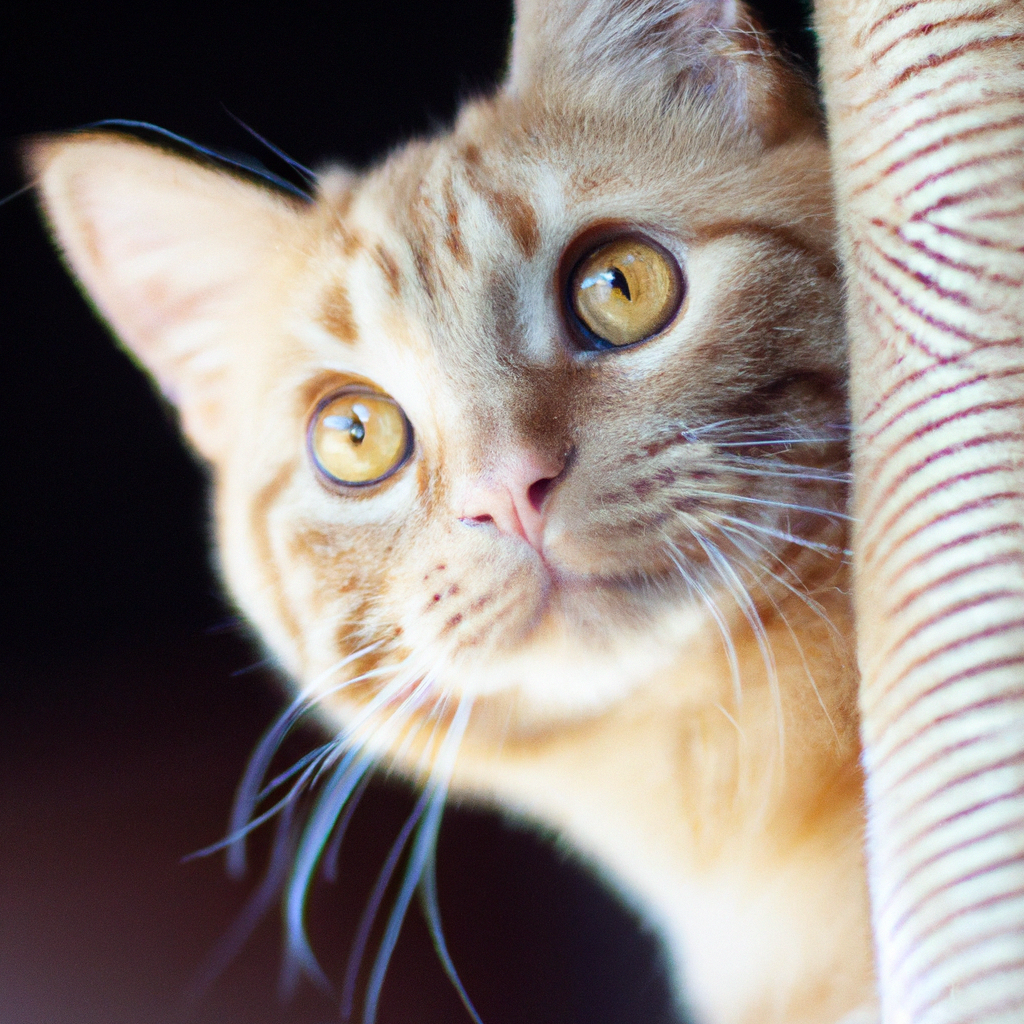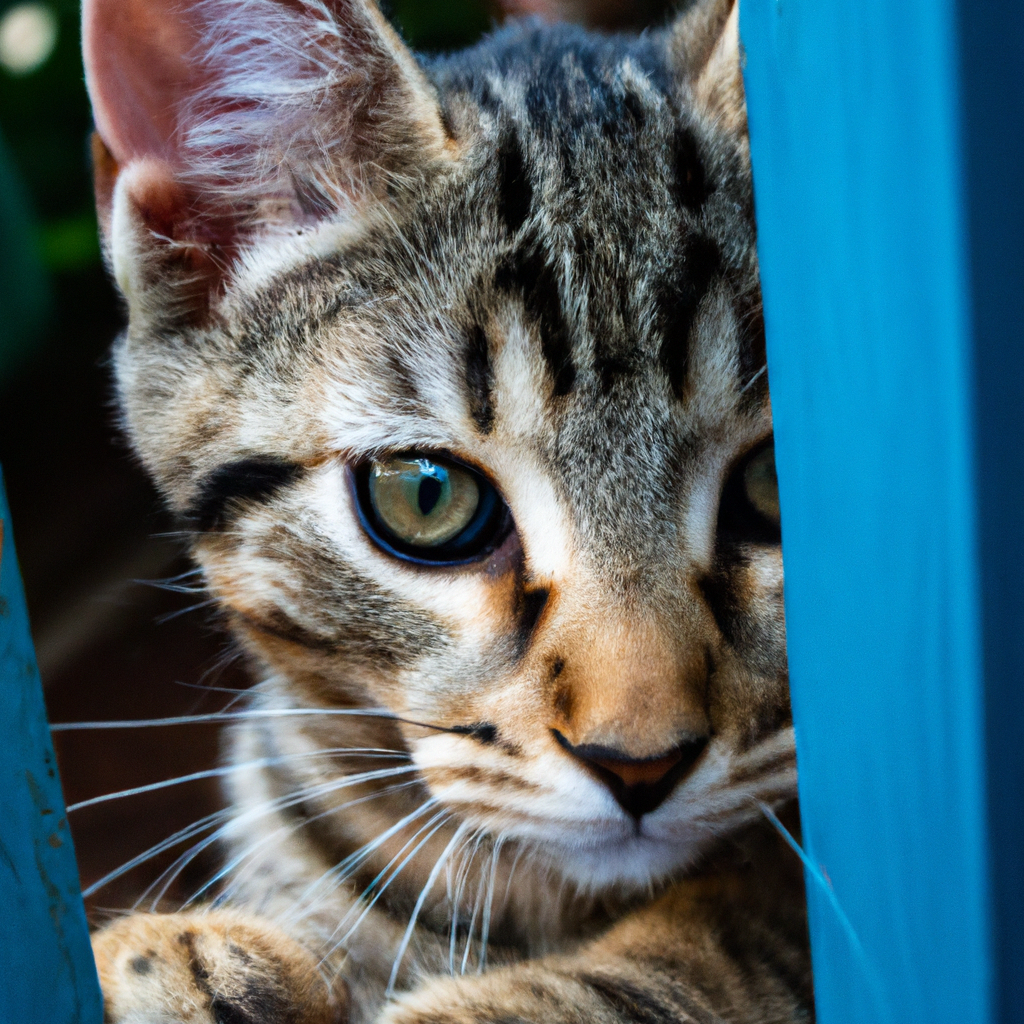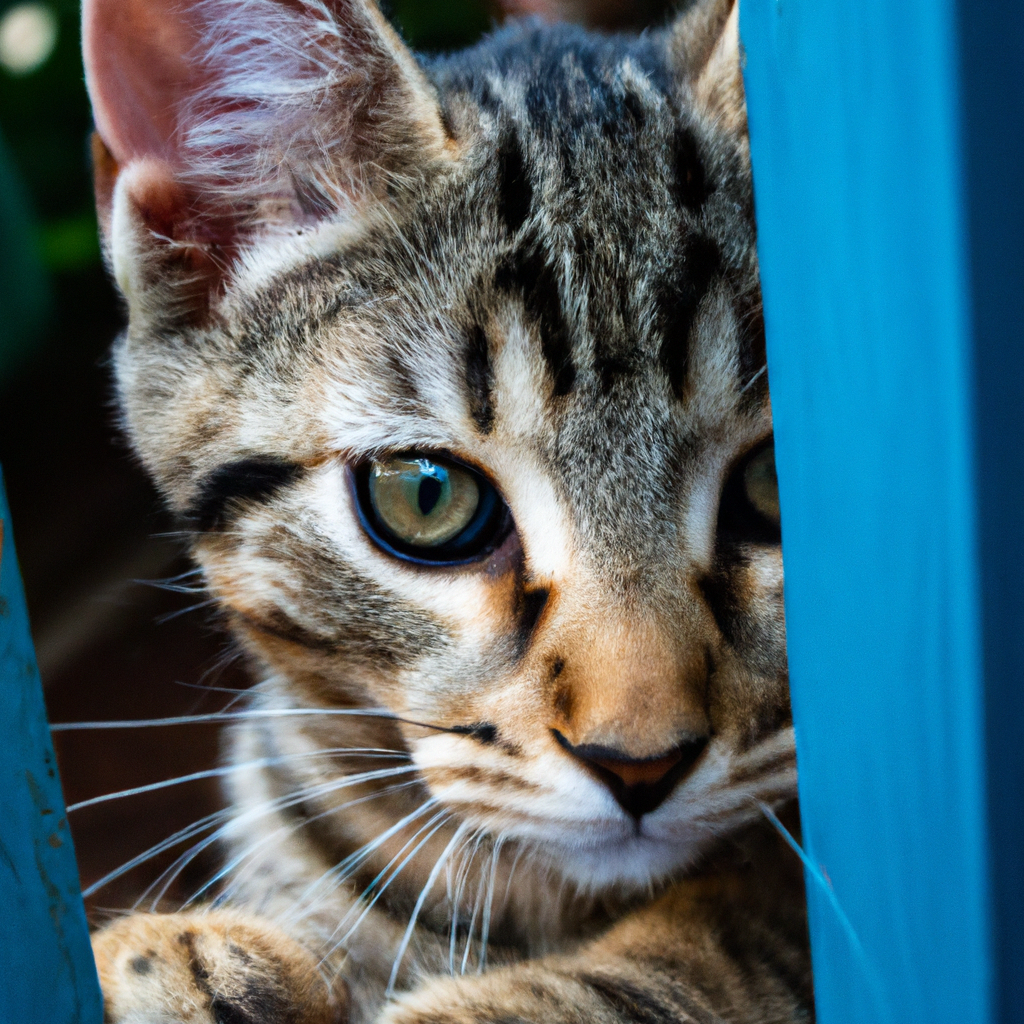Have you ever wondered when tabby cats reach full maturity? Tabby cats, known for their distinctive coat patterns, go through various stages of growth and development, just like any other cat breed. Understanding when they reach their full size and physical development can help cat owners provide appropriate care and ensure their furry friends thrive. In this article, we will explore the timeline of a tabby cat’s growth, from birth to maturity, and discuss the key indicators that show when they have reached their full potential. So, if you’re curious about when tabby cats reach full maturity, keep reading to discover all the fascinating information!

Physical Changes in Tabby Cats
Coat Development
One of the most noticeable physical changes in tabby cats is their coat development. Tabby kittens are born with a soft and fuzzy coat that provides warmth and protection. As they grow, their coat gradually transitions into the adult coat. This transition typically starts around three to four months of age and continues until they reach about one year old. During this time, the kitten’s fur becomes denser and longer, providing better insulation.
Additionally, tabby cats may undergo color changes in their coat as they mature. While some tabbies may retain their original coat colors, others may develop more vibrant or muted hues. It’s not uncommon to see tabbies with markings that vary from stripes to swirls or spots. These unique coat patterns are what make tabby cats so visually appealing and distinctive.
Body Proportions
Another physical change in tabby cats can be observed in their body proportions. As kittens, they have a lanky and disproportionate appearance, with long legs and a small body. However, as they grow older, their bones and muscles develop, resulting in a more balanced and proportional body shape.
Bone development plays a crucial role in the transformation of a tabby cat’s body proportions. During their growth, the bones become stronger and more defined, providing the necessary support for their bodies. Similarly, muscle development also contributes to their changing body proportions. As they engage in physical activities and play, their muscles grow and become more toned, giving them a more muscular and athletic appearance.
Sexual Maturity
Tabby cats, like all domestic cats, experience sexual maturity as they reach a certain age. The onset of puberty varies depending on the individual cat, but it typically occurs between five to nine months of age. During this time, hormonal changes take place, leading to various physical and behavioral changes.
Behavioral changes are often seen in sexually mature tabby cats, especially males. They may display more territorial and dominant behavior, marking their territory by spraying urine or engaging in territorial conflicts with other cats. Females, on the other hand, may become more restless and vocal, exhibiting signs of being in heat.
Reproductive abilities also come into play during sexual maturity. Female tabbies become capable of becoming pregnant and giving birth to kittens, while males develop the ability to impregnate female cats. To prevent unwanted pregnancies and control the cat population, spaying or neutering is often recommended by veterinarians.
Weight and Size
Tabby cats, similar to other cat breeds, undergo growth spurts during their first year of life. Their weight and size increase significantly during this period. However, the rate at which they reach their full-grown weight and size can vary depending on multiple factors, including genetics, nutrition, and environmental conditions.
A growth chart can help monitor the weight and size progression of a tabby cat. Generally, by around one year old, most tabbies have reached their full-grown weight. On average, a male tabby cat can weigh between 9 to 12 pounds, while females typically weigh slightly less, ranging from 7 to 10 pounds. However, individual variations exist, and some tabbies may be smaller or larger than the average.
Factors such as the cat’s breed, genetics, nutrition, and environmental factors play a significant role in determining the rate at which a tabby cat reaches full maturity. Providing a balanced and nutritious diet, appropriate veterinary care, and a stimulating environment are essential for their healthy growth and development.
Behavioral Changes in Tabby Cats
Playfulness
One of the most delightful aspects of tabby cats is their playful nature. As kittens, tabby cats are incredibly playful, exploring their surroundings and engaging in various activities. They enjoy chasing toys, pouncing on imaginary prey, and engaging in interactive play with their human companions.
During their early stages of play, tabby kittens often have boundless energy and can be quite mischievous. They may run, jump, and climb around the house, seeking stimulation and entertainment. This playful behavior not only helps them develop their physical coordination and agility but also fosters their mental and emotional well-being.
Tabby cats often reach their peak playfulness around six months to one year of age. At this stage, they are most active and enjoy interactive play sessions with their owners. Games that involve chasing toys, solving puzzles, or engaging in gentle wrestling matches are particularly enjoyable for them.
Exploration
Besides being playful, tabby cats are also naturally curious creatures known for their exploratory nature. From a young age, they have an innate curiosity to investigate their surroundings and discover new environments.
As kittens, tabbies may cautiously explore their immediate surroundings, gradually venturing further as they gain confidence. They use their keen senses to sniff, paw, and observe their surroundings, taking in the various scents, textures, and sights that they encounter.
This exploratory behavior continues into adulthood, although it may become less intense over time. Tabby cats may still enjoy exploring new areas within their homes or occasionally venturing outdoors under supervised conditions. Providing them with safe and enriching spaces for exploration, such as cat trees or puzzle toys, can help satisfy their natural curiosity and stimulate their minds.
Territorial Marking
Tabby cats, like other feline companions, may exhibit territorial marking behavior as they mature. This behavior is more commonly observed in male tabbies, although females may also engage in it to a lesser extent.
Territorial marking involves the deposition of urine or the scratching of specific surfaces to establish and communicate ownership of an area. Male tabbies often engage in spraying, where they release a small amount of urine onto vertical surfaces, such as walls or furniture. This behavior is driven by the natural instinct to mark their territories and communicate with other cats.
To manage territorial marking behavior, spaying or neutering is highly recommended. These procedures not only help prevent unwanted pregnancies but also reduce the likelihood of territorial marking due to a decrease in hormone levels.
Social Behavior
Tabby cats are known for their sociable and affectionate nature. They form strong bonds with their human companions and enjoy spending time in their presence. They often seek opportunities to cuddle, play, or simply be close to their beloved humans.
However, the level of social behavior can vary among individual tabby cats. Some may be more outgoing and social, actively seeking interaction and attention. Others may be more reserved, preferring quieter environments and gentle interactions. This variability is influenced by factors such as genetics, early socialization experiences, and the cat’s unique personality.
Tabby cats can also exhibit social behavior towards other pets within the household. With proper introductions and gradual acclimation, tabbies can form positive relationships with fellow cats and dogs. However, it’s essential to monitor their interactions and ensure that they are comfortable and safe in each other’s presence.
Health Considerations for Tabby Cats
Teeth and Dental Health
Maintaining proper oral hygiene is crucial for the overall health and well-being of tabby cats. Poor dental health can lead to various dental diseases, including periodontal disease and tooth decay. Regular dental care, such as brushing your cat’s teeth or providing dental treats, can help prevent these issues.
It’s important to monitor your tabby cat’s dental health and consult with a veterinarian if you notice any signs of dental problems, such as bad breath, swollen gums, or excessive drooling. Veterinarians may recommend professional dental cleanings under anesthesia to remove any tartar buildup and address any underlying dental issues effectively.
Reproductive Health
Reproductive health is a significant consideration for tabby cats, especially if they’re not spayed or neutered. Intact female tabbies are prone to going into heat, which can be a stressful and uncomfortable experience for both the cat and the human occupants of the household. Additionally, uncontrolled breeding can contribute to the overpopulation of cats.
Spaying or neutering is strongly recommended to prevent unwanted pregnancies, reduce the risk of certain reproductive diseases, and help control the cat population. These procedures are typically performed by veterinarians and are considered safe and routine.
Vaccinations and Immunizations
Tabby cats, like all cats, require proper vaccinations and immunizations to protect them from various viral and bacterial diseases. Vaccinations help boost their immune system and prevent the development of potentially life-threatening conditions.
Common vaccinations for tabby cats include those against diseases such as rabies, feline distemper (panleukopenia), feline herpesvirus, and feline calicivirus. The specific vaccination schedule should be discussed with a veterinarian and tailored to the cat’s individual needs.
Regular veterinary check-ups are essential for maintaining a tabby cat’s health. During these visits, veterinarians can administer necessary vaccinations, perform routine examinations, and address any health concerns or questions.
Senior Cat Care
As tabby cats age, their health needs may change, and they may require additional care and attention. Senior tabbies, typically classified as cats over the age of seven, may experience age-related issues such as arthritis, dental problems, or changes in appetite.
Monitoring their weight, providing a balanced and age-appropriate diet, and ensuring regular veterinary check-ups can help identify and address any health concerns promptly. Specialized senior cat food may also be beneficial, as it is tailored to meet their specific nutritional requirements.
Engaging in gentle play sessions, providing comfortable resting areas, and offering mental stimulation are essential for supporting the overall well-being of senior tabbies. Regular grooming, including brushing their coat and keeping their claws trimmed, can also contribute to their comfort and hygiene.
Factors Affecting Maturity Rate
Breed
The breed of a tabby cat can significantly impact its maturity rate. Different cat breeds have distinct growth patterns and timelines. Some breeds may reach their full maturity earlier, while others may take more time to develop fully.
For example, larger cat breeds, such as Maine Coons or Savannah cats, tend to have a more extended growth period and may continue to mature until they are three to four years old. On the other hand, smaller breeds, like Singapura or Munchkin cats, may reach their full maturity by around one to two years of age.
Understanding the specific growth and development patterns of the tabby cat’s breed can help set appropriate expectations and provide the necessary care and attention throughout their maturity journey.
Genetics
Genetics play a fundamental role in determining how quickly a tabby cat reaches full maturity. Just like humans, cats inherit various genetic traits from their parents, which can affect their growth rate, size, and overall development.
Genetic factors can influence not only the physical appearance of a tabby cat, such as coat color and markings, but also their growth pattern. It’s essential to consider the cat’s genetic background when assessing their maturity rate and adapting their care accordingly.
Nutrition
Providing optimal nutrition is vital for a tabby cat’s healthy growth and development. A well-balanced diet that meets their nutritional needs is essential from kittenhood through adulthood.
Kittens require a diet rich in essential nutrients, proteins, and calories to support their rapid growth. As they transition into adulthood, maintaining a balanced diet helps ensure their overall well-being and prevents nutritional deficiencies or excesses that could impact their growth rate.
Consulting with a veterinarian to determine the most appropriate diet for your tabby cat and considering their individual nutritional requirements can help support their healthy development.
Environmental Factors
Various environmental factors can influence a tabby cat’s maturity rate. The environment they grow up in, including their living conditions, stress levels, and exposure to toxins, can impact their overall well-being and development.
Providing a safe and stimulating living environment is crucial for promoting a tabby cat’s healthy growth and development. Enriching their environment with toys, scratching posts, and interactive play sessions can help support their physical and mental stimulation.
Managing stress levels is also important, as prolonged stress can have a negative impact on a tabby cat’s growth and development. Minimizing loud noises, providing hiding spots, and promoting a calm and predictable routine can help reduce stress and create a nurturing environment.
Being mindful of potential toxins in the environment is vital for a tabby cat’s safety and well-being. Ensuring that household plants, cleaning products, and human foods are all safe for cats can help prevent accidental poisoning and potential health complications.
In conclusion, tabby cats undergo a series of physical changes as they mature, including coat development, changes in body proportions, sexual maturity, and changes in weight and size. They also experience behavioral changes such as playfulness, exploration, territorial marking, and social behavior. Health considerations for tabby cats include dental health, reproductive health, vaccinations, and senior cat care. Several factors, including breed, genetics, nutrition, and environmental conditions, can influence their maturity rate. By understanding and addressing these factors, tabby cat owners can ensure the well-being and proper development of their feline companions.


